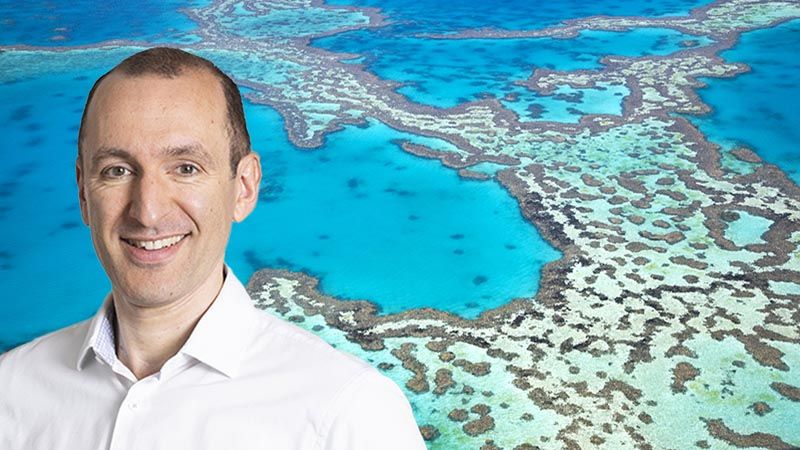“What have the Romans ever done for us?”, ask a group determined to expel them from Jerusalem 2,000 years ago, in the old comedy film Monty Python’s Life of Brian. “Roads, education, security, sanitation, the aqueduct, wine.”
Here’s a similar question: what has nature ever done for us? Also, a huge amount, it turns out. Provisioning resources, regulating services and protecting us from extremes in weather and temperature, along with serving as a cornerstone in our response to climate change. Yet, the challenges we face today are immense. With increasing emissions and a changing climate, we must reflect on what nature has done for us and how we can better protect it.
As we approach an important time of year for sustainability, two events are on the horizon: COP16 on nature in Cali and COP29 on climate in Baku. Here, we explore the interconnections between nature and climate as we prepare for these closely linked conferences.
Between now and the end of 2024, we will see the most anticipated election of the year and a final push for corporates’ earnings to meet analyst forecasts which will have significant implications on global markets. The next few months will also be critical for sustainability watchers and ESG investors, with the two major global COP events drawing global attention, not only because of the ongoing geopolitical and economic challenges of 2024, but also because of their potential to shape future environmental policies and actions. Both will have hype and media attention. Both will have outputs like pacts, treaties, agreements and pledges signed by smiling leaders. And both have clear objectives.
Nature and climate interconnection
The theme for COP16 is Peace with Nature and reversing nature loss and assessing progress of 2022’s Global Biodiversity Framework. For COP29, focus is action and, as always, fossil fuels (going down or going out?), financing (how many trillions are needed?) and limiting emissions (will the US and China agree?). But it is uncertain if either COP will meet their aims. Two links between nature and climate should feature at both conferences.
First, climate change creates nature loss. Australia’s Great Barrier Reef is a suitable image to use here. More carbon in the air means more heat. Also, oceans absorb carbon, which is dissolved as carbonic acid – a regulating service. Coral is extremely sensitive to heat and acid, and the algae and organisms that result starve the coral of light, nutrients and oxygen. A colourful ecosystem then becomes a bleach-white skeleton.
The great negotiating success from COP21 at Paris in 2015 was agreement to limit warming. One and a half degrees was the stretch target. But breaching this is something else that 2024 will be remembered for. As emissions and temperatures continue their upward trend, impacts to other ecosystems, as with coral, is almost certain. Wildfires cause environmental and societal damage, for example, people in affected areas like California are not able to insure their homes. Just recently the Hurricanes Helene and Milton, not quite as destructive as Harvey in 2017 (whose bill was over $100bn), but made more powerful by warmer, wetter air caused widespread destruction.
Second, nature is needed for action on climate. We have just seen how oceans suck planet-warming carbon out of the air. Natural systems—forests, wetlands, oceans, and soils—are essential carbon sinks that help mitigate climate change by absorbing carbon dioxide This is climate mitigation, reducing the amount is important particularly as human emissions still exceed 50bn tonnes annually.
Natural systems, once strengthened instead of degraded, are natural defences to the physical impacts of climate change. Trees and mangroves, for example. The 2022 floods in Pakistan were made worse because of chopping trees that would have otherwise reduced the effects. This is climate adaptation; we need to adapt to living in a warmer planet where previous expectations of what we get from climatic systems are no longer the same.
Challenges and opportunities for investors
Above are some of the challenges for policymakers heading to Cali and Baku, but investors have challenges too and will be under pressure to step up ESG commitments. We can look at our progress for the GBF (specifically Target 15): have we assessed, disclosed and reduced risks through investment and engagement activity? This means looking at nature in ESG scorecards for example, for companies in the fashion sector, planning to achieve biodiversity net gain, and encouraging and using disclosures (following TFND, a new framework).
Initiatives like Nature Action 100, an investor collaboration, should help guide investor collaboration at COP16, while at COP29 the role of renewable energy and carbon capture technologies will come into focus, particularly for those investing in industries that are transitioning to greener practices. At COP28 the UK restated its commitment to reduce emissions by 68% vs 1990 by 2030. Wind, solar, hydro, battery storage, Nationally Significant Infrastructure Projects, carbon pricing and carbon capture all feature; all need government certainty and conviction, and investors, to meet the target.
We can engage with policymakers – dialogues, letters, responses to consultations, and industry working groups – to share our perspectives and expectations.
Once financial commitments for restoring nature and addressing climate change are agreed—such as the New Collective Quantified Goal on Climate Finance for COP29—there are key considerations:
- UK pension funds: Billions of pounds from UK pension funds could be directed toward UK-based climate and nature solutions.
- Blending capital: A mix of private and public capital will be essential to scale these investments.
- Asset managers’ duties: Asset managers must balance their fiduciary duty to clients while also considering the impact of their investments on nature and climate.
The world will be watching whether these COP meetings will yield the commitments needed to tackle both climate change and biodiversity loss, and even if just some of these are met, policymakers and investors can feel just like the Romans in expanding civilisation.








